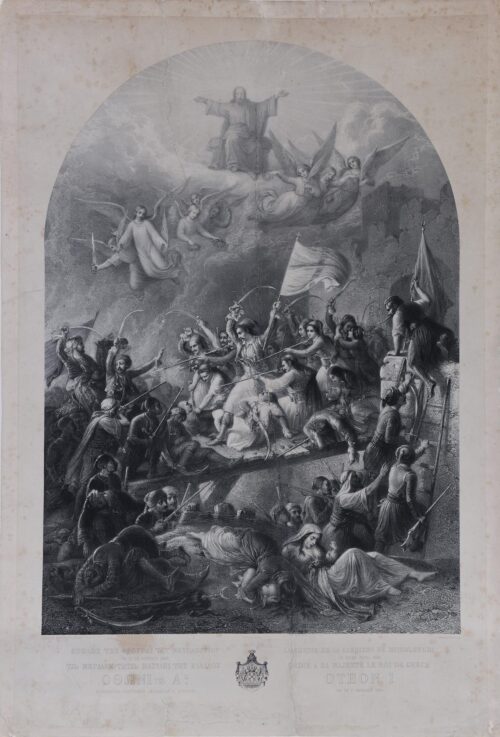
Vryzakis Theodoros (1814 or 1819 - 1878)
The Exodus of Messolonghi, 1855
After his father was hanged by the Turks in 1821 he and his brother Euthymios were sent to the Capodistrias Orphanage on Aegina. In 1832, probably with the help of Ludwig Thiersch, he went to Munich where he studied at the Panhellenion, the Greek school founded by Ludwig I for the orphans of the veterans of the Greek War of Independence. Twelve years later, in 1844, he was accepted by the Munich Academy of Fine Arts and until 1855 continued on a scholarship of the Greek colony. Through this financial support he travelled in Europe, while from 1848 to 1851 he was in Greece with the aim of studying the landscape and the figures he would be depicting in his history paintings. Meanwhile, in Munich he had come to know the work of Peter von Hess, Karl von Heideck, Joseph Petzl, Karl Krazeisen and Joseph Stieler, a fact which serves to interpret the fashioning of his style by means of the classical romantic spirit as well as his choice of the subjects of his painting from the events of recent Greek history.
Returning to the Bavarian capital he opened a workshop and had several young apprentices working under him. During his artistic career he took part in many exhibitions (World Exhibition of Paris 1855, International Exhibition of London 1862, Olympia 1870) and won distinctions (1st prize at the International Exhibition of Vienna in 1853 for his work “The Exodus from Missolonghi”, silver medal 2nd class at the 1870 Olympia for his lithograph “Karaiskakis’ Army Camp”). Between 1861-1863 he did the paintings for the Greek church of the Annunciation in Manchester, at the request of the Greek colony there. There is no evidence of other work during the final decade of his life as an eye disease forced him to isolate himself from the artistic and social life of Munich. His paintings, which he willed to the University of Athens, in the end came to the National Gallery by means of a University Donation. In the exhibition “Monuments of the Greek War of Independence” which was organized, after his death, at the Parnassos Hall in 1884, six of his works were presented.
The one who introduced the Munich School to Greece, he was systematically involved with depictions of scenes from the Greek War of Independence and its well-known or even anonymous veterans, in agreement with the principals of the Academy. This subject matter was particularly popular and his works made into lithographs were widely circulated and became established in the public’s mind as authentic reproductions of modern Greek history. Another aspect of his artistic creation were his portraits, in which Vryzakis showed his skill as a portrait painter, fully in control of his expressive means.

The Exodus of Messolonghi, 1855
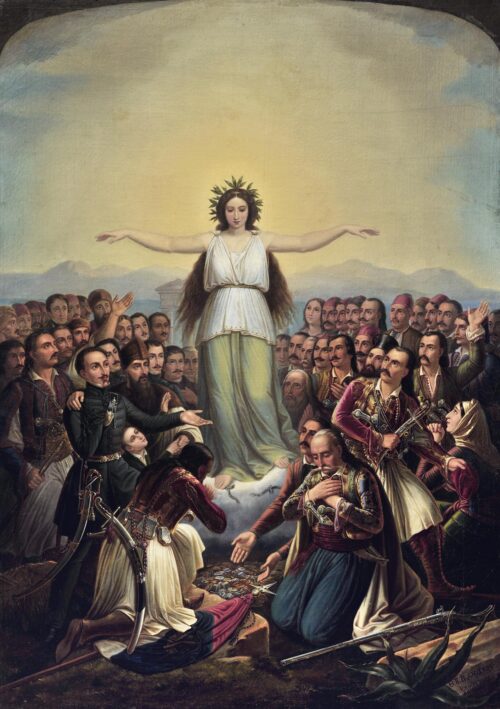
The Defense of the Homeland above All Else, 1858
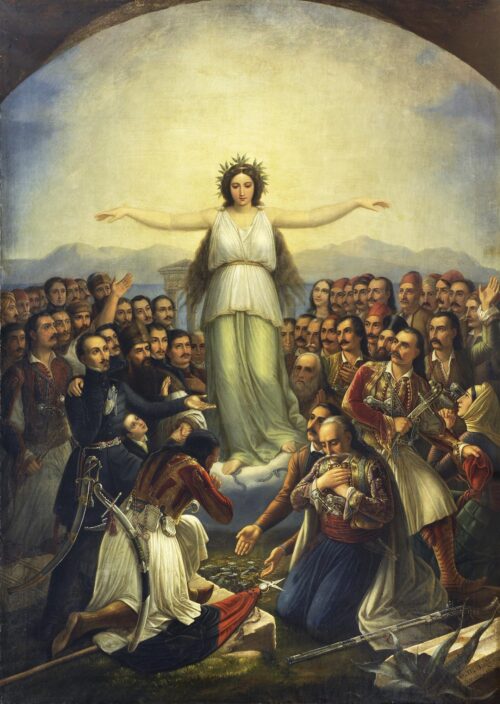
Greece Expressing Gratitude, 1858
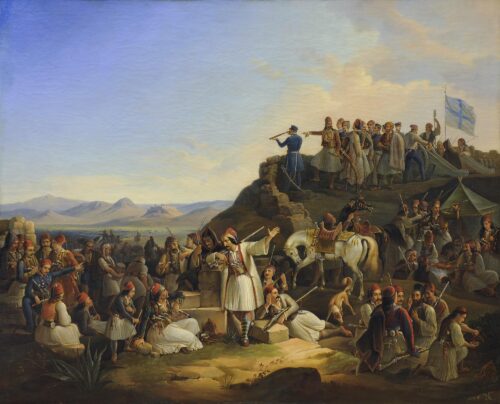
The Army Camp of Karaiskakis, 1855
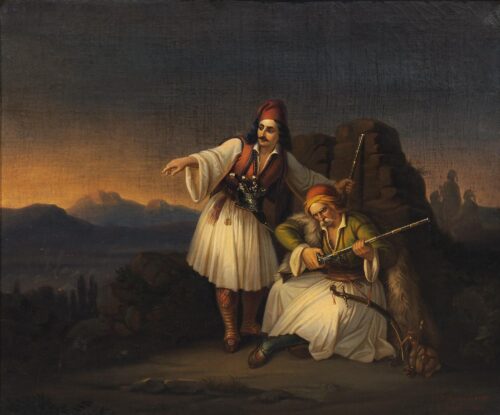
Two Warriors, 1855
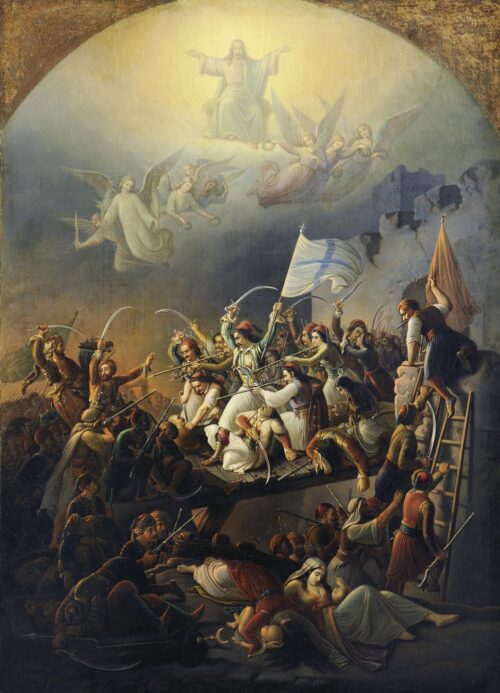
The Exodus from Missolonghi, 1853
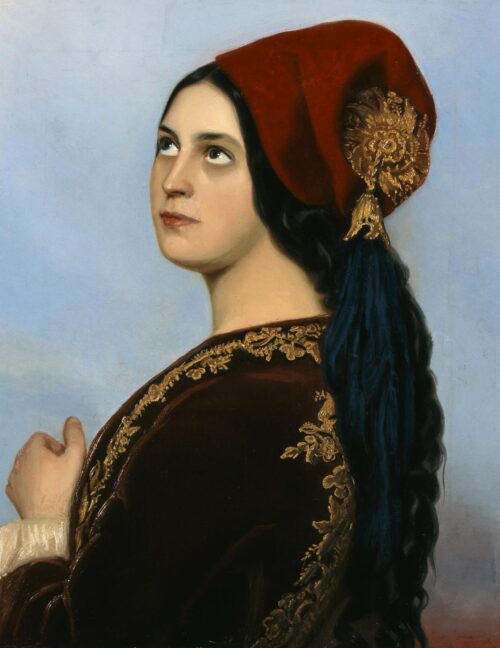
Greek Woman
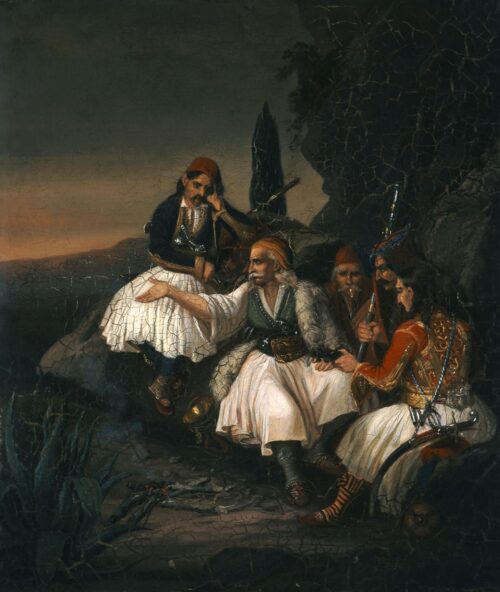
War Council
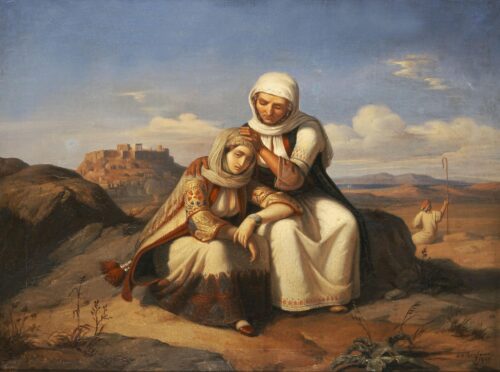
Solace, 1847
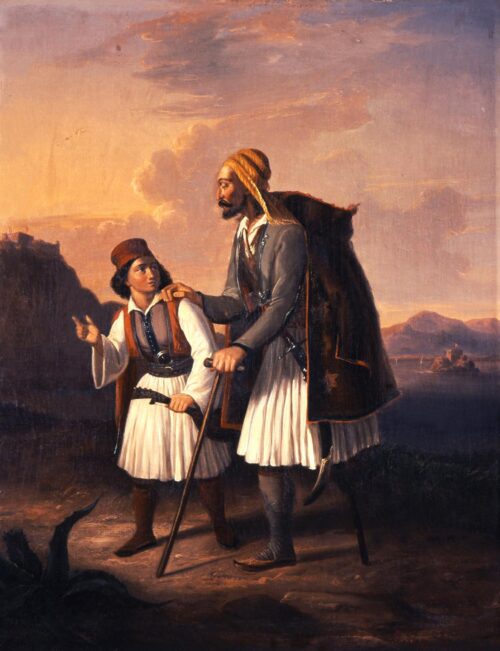
Blinded Man, [1850]
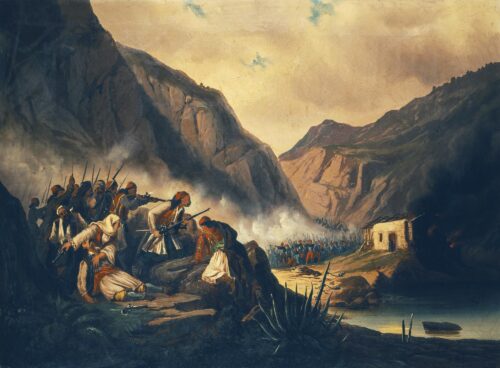
The Battle at the Straits of Dervenakia
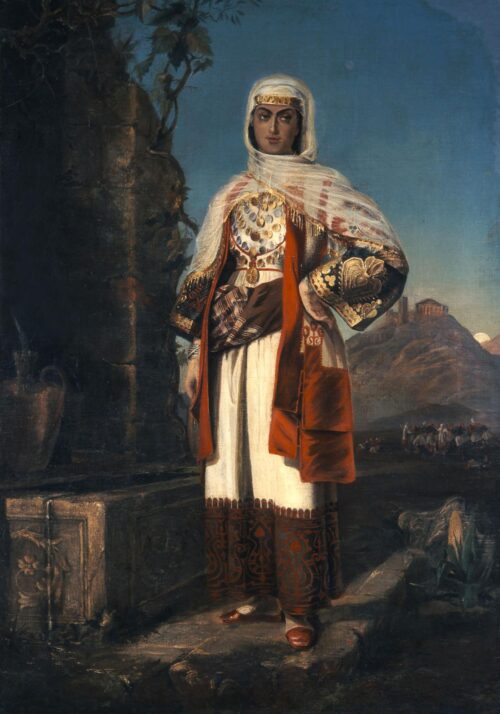
Young Woman in Attica Dress
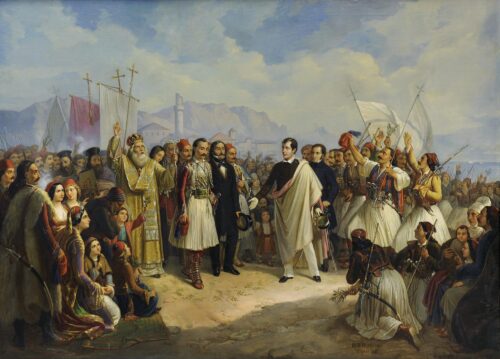
The Reception of Lord Byron at Missolonghi, 1861
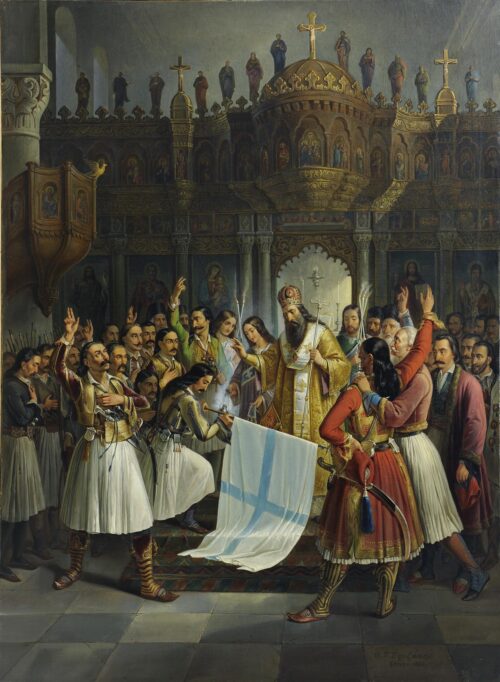
The Bishop of Old Patras Germanos Blesses the Flag of Revolution, 1865
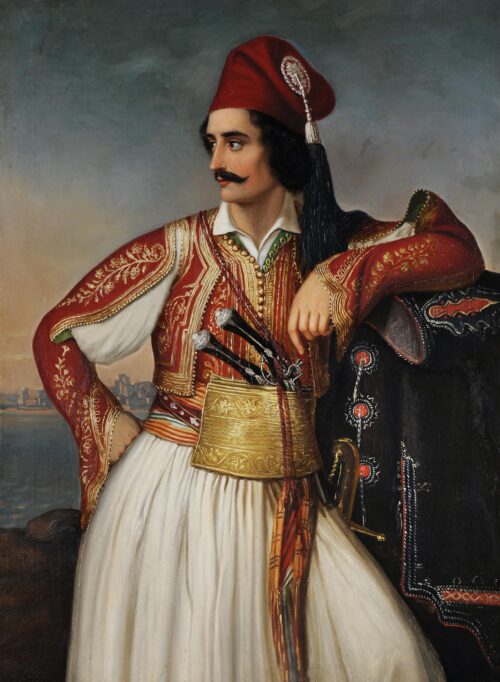
Portrait of Anagnostopoulos
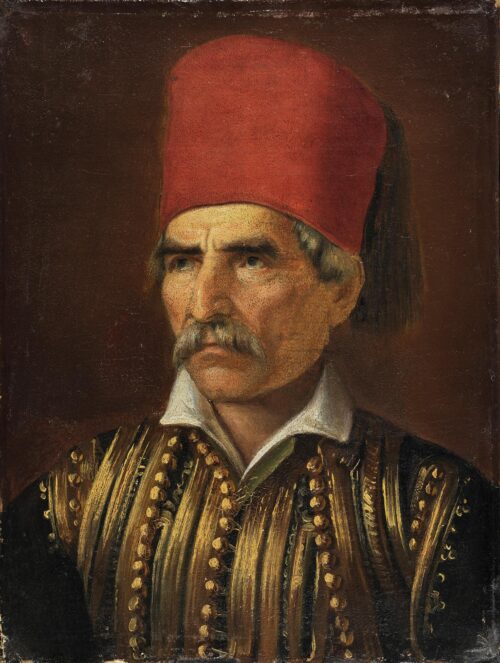
Portrait of Kolokotronis
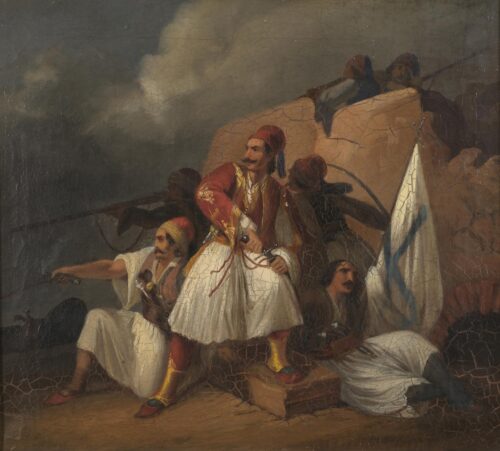
War Scene
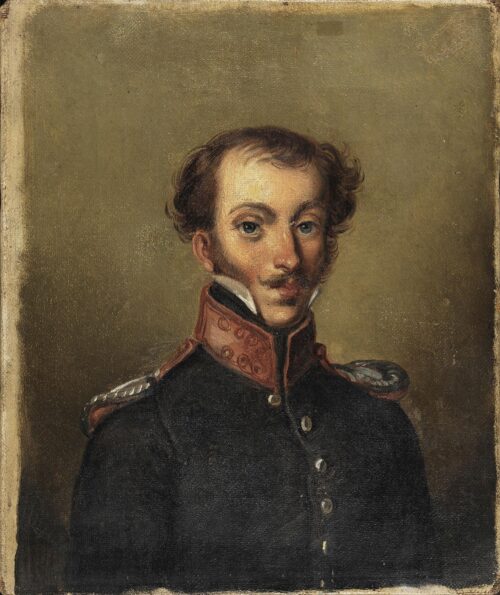
Portrait of Dimitrios Ypsilantis
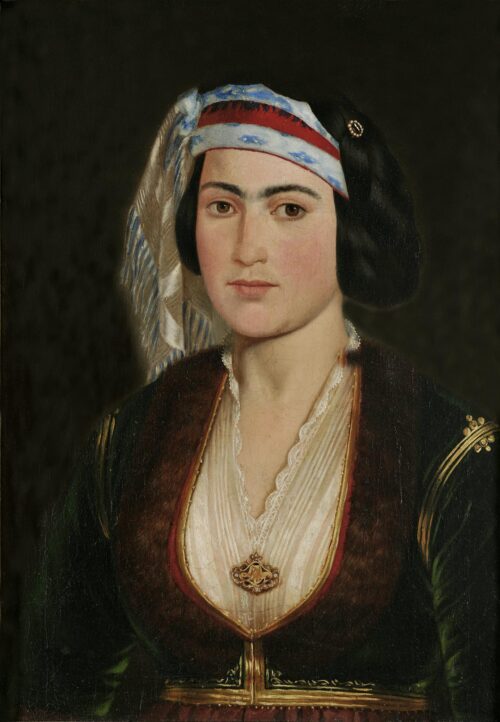
Portrait of a Young Maiden in Greek Costume
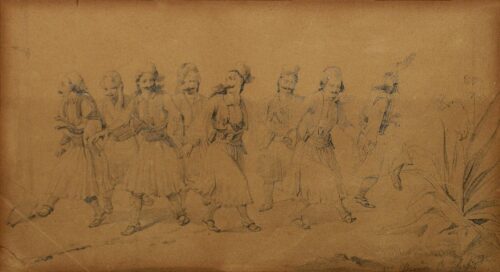
Dancing Men Wearing the Foustanella
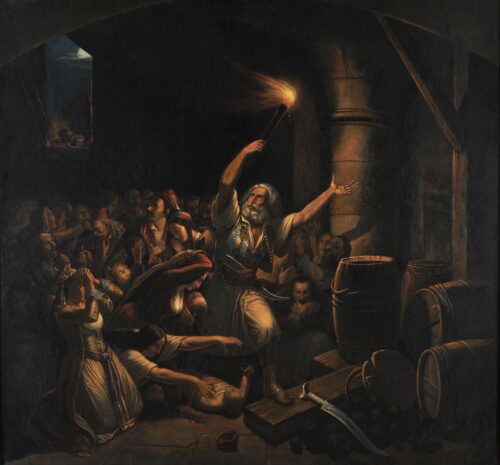
Kapsali’s Sacrifice
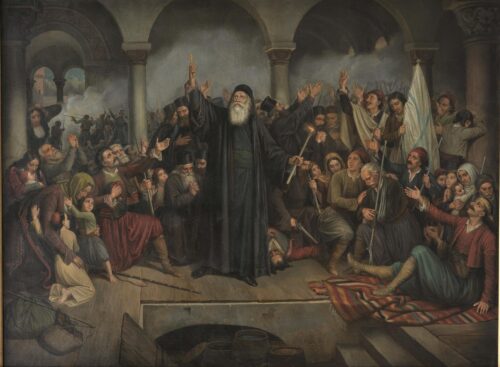
The Monastery of Arkadi, ca 1867
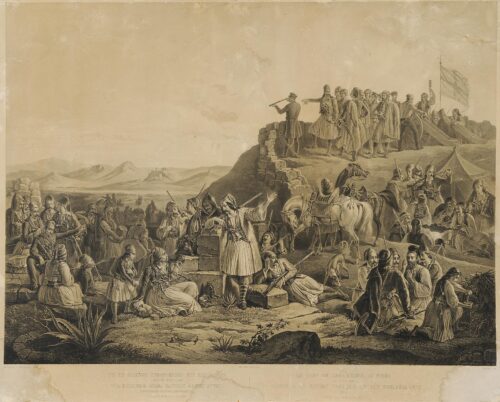
The Army-Camp of Karaiskakis
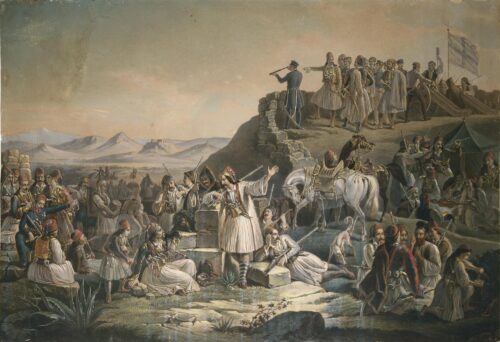
The Camp of Karaiskakis

We use cookies to make our site work properly, to personalize content and ads, to provide social media features and to analyze our traffic. We also share information about how you use our site with our social media, advertising and analytics partners. Read the Cookies Policy.
These cookies are necessary for the website to function and cannot be switched off in our systems. They are usually only set in response to actions made by you which amount to a request for services, such as setting your privacy preferences, logging in or filling in forms. You can set your browser to block or alert you about these cookies, but some parts of the site will not then work. These cookies do not store any personally identifiable information.
If you disable this cookie, we will not be able to save your preferences. This means that every time you visit this website you will need to enable or disable cookies again.
These cookies tell us about how you use the site and they help us to make it better. For example these cookies count the number of visitors to our website and see how visitors move around when they are using it. This helps us to improve the way our site works, for example, by ensuring that users find what they are looking for easily. Our website uses Google Analytics for statistics reporting.
Please enable Strictly Necessary Cookies first so that we can save your preferences!